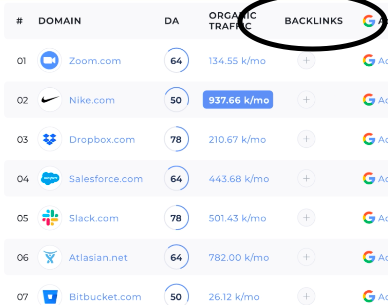- Write With AI in Your Brand’s Voice with GrowthBar - April 21, 2023
- How Long Should a Blog Post Be? [2025] - April 14, 2023
- 13+ Best ChatGPT Prompts for SEOs [2025] - April 14, 2023
Ended soon
There’s really no way around it: to write an article that will rank well on Google, you need to know about search engine optimization (SEO).
Depending on who you talk to, you’ll hear SEO described as anything from a mysterious process that magically results in an organic traffic spike, to a simple checklist of things to do before you hit publish.
The truth is: writing an article or blog post that will rank on Google is pretty simple. With a few best practices you can write an article that will rank. That’s what this post is about.
Try GrowthBar Free –> Try GrowthBar
And I know what I’m talking about.
Before starting GrowthBar, I started Growth Marketing Pro. In just a couple of years, I grew it to 50k+ organics per month and it now does over $100k per month in passive income.
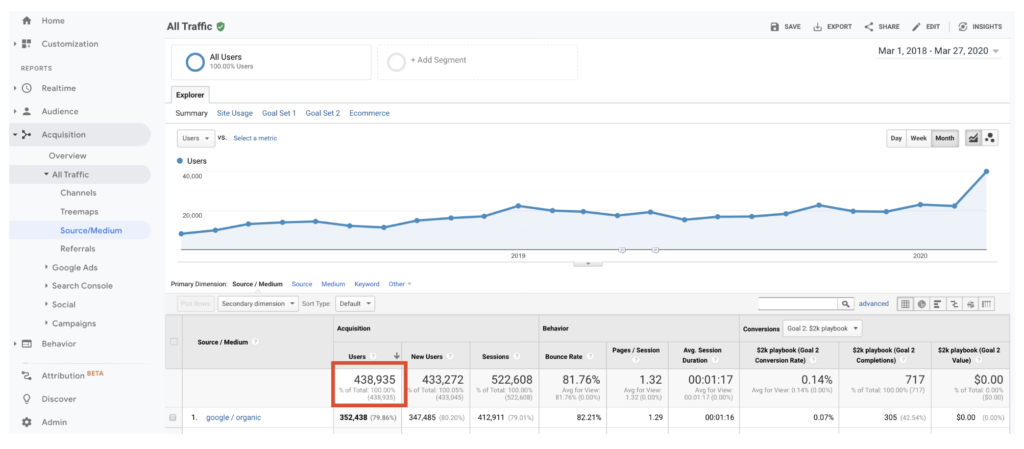
Then, just to do it, I started a healthcare blog with two friends — growing it to 116,961 organic visitors per month in under 12 months, before selling it to a public healthcare company.
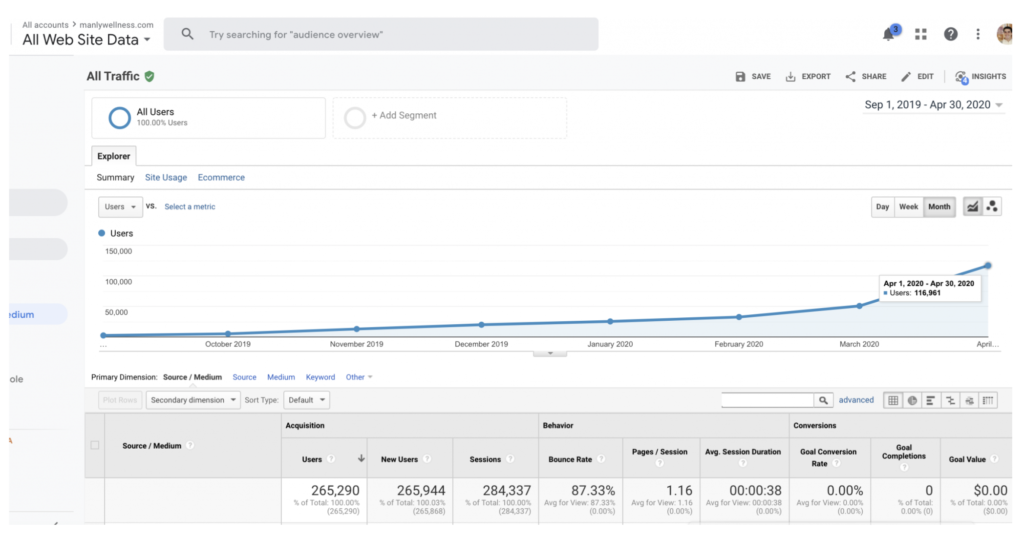
Also, check out this video: I detail the 7-step process we used to rank for keywords (and then sell ManlyWellness.com to a public company)…
Table of Contents
Why and how SEO impacts your Google ranking
In the vast sea of marketing tactics, there are a ton of ways to get customers and generate leads on the internet.
But the most profitable-from-day-one strategy is SEO. If you can get each of your articles to rank highly on Google, you’ll be able to get more traffic to your site, and hopefully, convert this traffic into customers.
Higher ranking = more impressions and more clicks = more customers!

Written content is essential to SEO because Google indexes content. If you have no content, it’ll be really tough to increase page views and boost conversions. Great content is what creates the value in SEO.
That’s why marketers love content.
And while Google continues to update its algorithm over the years to help out searchers, one thing remains true: they rank posts that are highly relevant, useful, informative, and authoritative.
Blogging about your new favorite coffee brand isn’t going to pop up on Google any time soon…unless that post follows the five steps we’ll outline here…
Also try: Our Free AI Content Generator
How Do You Make an Article Rank Highly on Google?
Here’s how you can update your SEO strategy so you can get a top rank on Google for your next blog post, whether you’re making a pillar page, an e-book, or a how-to article.
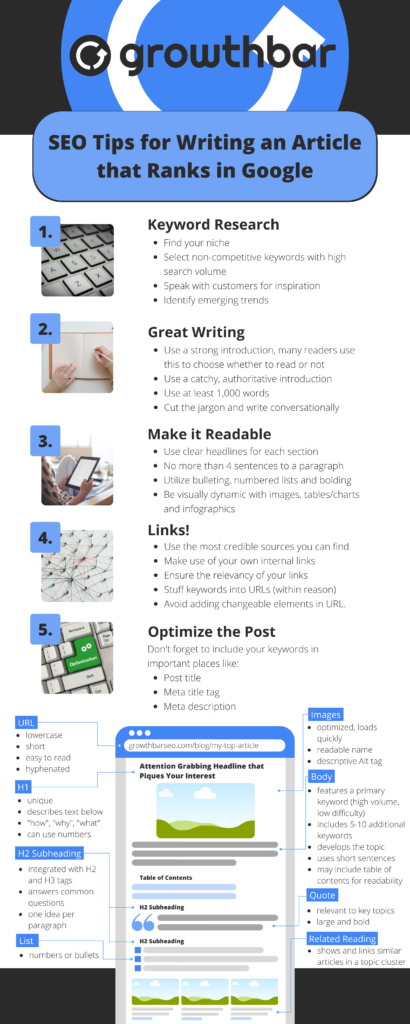
1. Choose a good topic, and choose one that includes great keywords
You probably noticed this article ranks quite high on the Google. That isn’t by accident.
There are 1.7 billion websites on the internet. So if you’re writing content for SEO, you need to be thoughtful when choosing keywords to rank for. You need to pick a specific niche within your domain that you would like to own, and then subsequent blog post topics.
For example, it may be hard to rank for a keyword like “social media marketing” because it’s a highly competitive area. That means lots of marketers (and others) have already written articles trying to rank for this topic.
However, intent-based marketing and social intent data are keywords you could consider. They’ll get enough traffic that you’ll bring potential customers to your site, but don’t have so many posts already written by authoritative organizations (high domain authority) that you’ll never get to the top.

Once you have your niche, it’s keyword time. Not all keywords are created equal. The surest way to succeed with SEO is to find keywords that have high search volume and are relatively uncompetitive. The keywords you choose must both have high search volume and be related to your product offering.
In this case, using a keyword research tool like GrowthBar is super helpful. The best keyword research tools enable you to see keyword search volume and competitiveness, and also suggest long-tail keywords to give you thousands of keyword ideas.
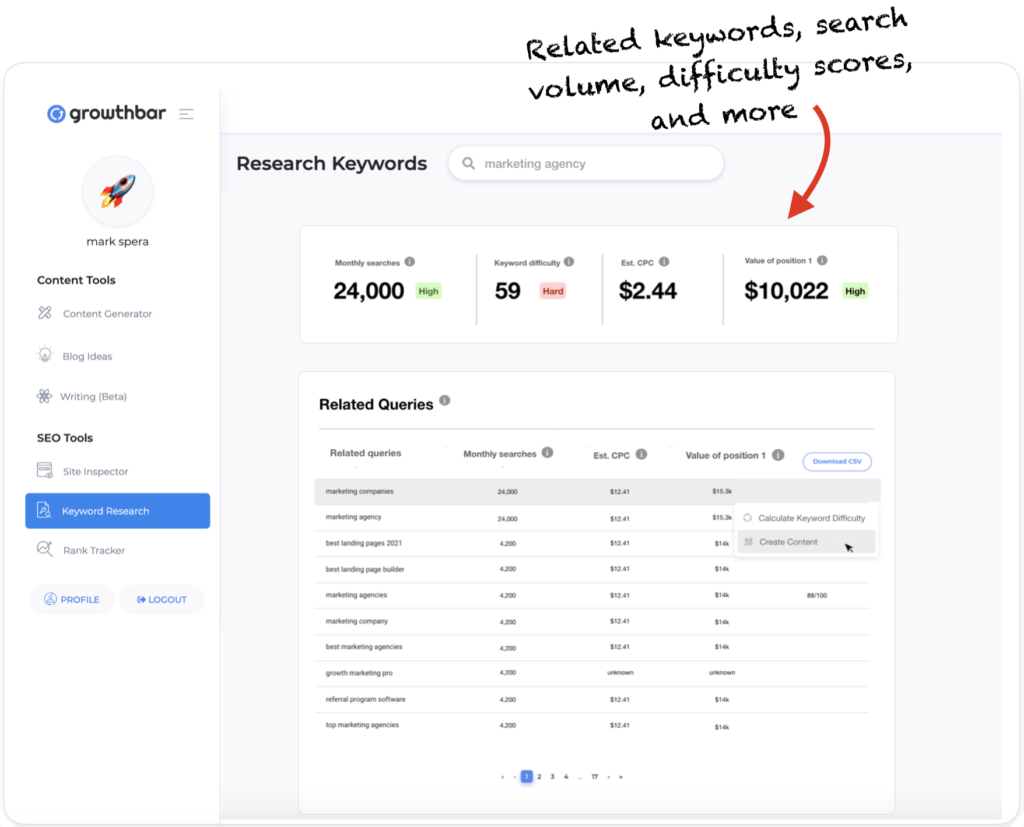
Once you’ve decided on the keywords you want to rank for based on search volume and competitiveness, you’ll want to weave them into your content. In addition to the written content, you should also use them in your:
- Page URL: [blog domain]/your-keywords-here
- Title: Your keywords should basically be your title
- Meta description: Include the target keyword somewhere in the first 100 words of your article, or update your meta description with an SEO plugin on your blog
- Into the caption and alt image tag of your images (where appropriate)
- Throughout the rest of the content where it makes sense
Hint: Another way I like to find valuable keywords is by speaking with customers. Search data is great, but sometimes prying common questions out of potential customers or identifying emerging trends can be valuable in finding pockets of keyword arbitrage.
One more hint: Emerging keywords are a goldmine. If there are new businesses or trends in your industry, get on them fast. If you’re the first one to write about them, there’s a very high likelihood you can rank. Even if they’re not appearing in keyword tools, use your intuition!
Check out GrowthBar free for 5 days and make your SEO efforts a lot easier! Watch me make a blog post with it in 5 minutes here.
2. Write well and write enough
The actual quality of your writing affects your rankings. Gone are the days of getting to page one of the Google search results page (SERP) by writing a mediocre 500-word article.
This article took a while to write. Nobody said this was easy!
So make sure your writing is up to par with quality, optimized content:
- Conclusions: There are some people who will decide whether to read an article by reading the conclusion first. You want to use the conclusion to summarize the key points of the post to encourage these readers to read your entire article, so make sure to write a conclusion that summarizes the key takeaways from the posts.
- Introductions: It’s one of the first things your readers see (unless they’re those conclusion-jumpers), so make it count! Make it catchy, but also authoritative: they want to figure out as quickly as possible if your page will provide them the answer they’re looking for.
- Proper length: In most search verticals, longer-form content does better in the rankings, so make sure yours are longer (in the 1,000-word range at least). That’s why GrowthBar has a word count feature that allows you to instantly see how long any webpage is.
- Keywords: While John Mueller (Head of Webmaster Trends @ Google) has said that keyword density doesn’t matter — it does to some degree. Google’s crawlers do want to see your target keywords and other semantically similar keywords in your content. You don’t need to go overboard, but you do need to include pertinent keywords early and often.
- Appropriate verbiage: High quality doesn’t necessarily mean using big words and industry jargon. You can write great posts without alienating audiences that don’t have a specific background or experience. Write conversationally in the first person. They should be action-oriented and concise, and make sure to keep it readable with varying sentence structure, shorter paragraphs, and good formatting.
FYI: Article length isn’t arbitrary: Google isn’t doing this just to make you put in work.
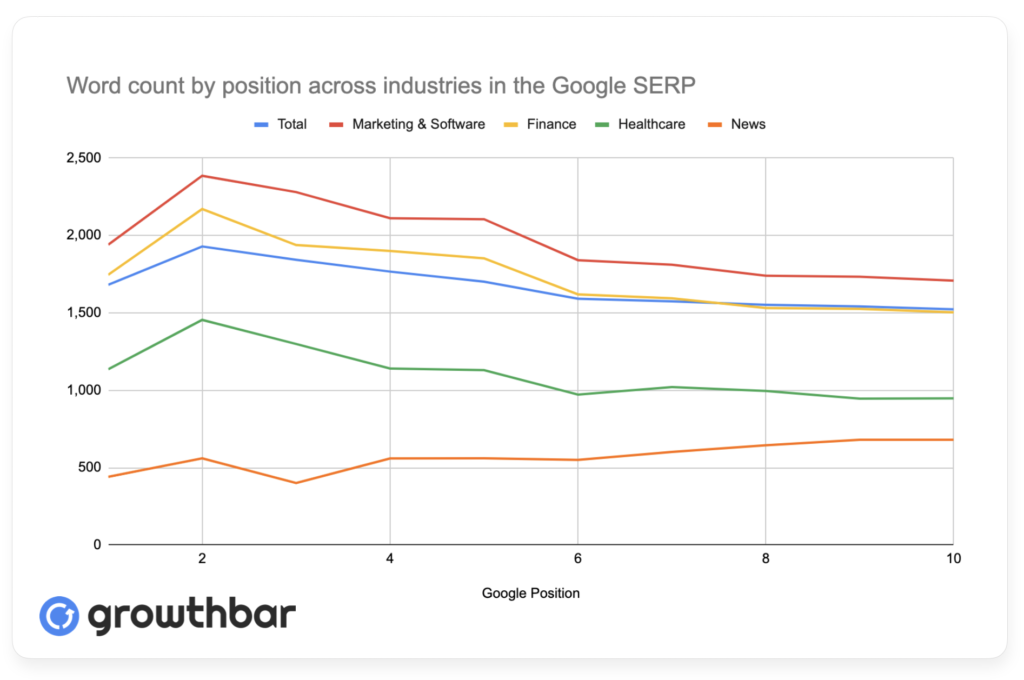
Length helps content writers like you provide searchers with everything they’re looking for, and that’s how you get the top SERP rankings. So when the OG bloggers want to know, “Why are blog posts so long these days?” that’s why!
Note, that content length varies by industry. The best tools like GrowthBar will be able to tell you how long your post should be for your specific search term, as well as which keywords to include, headline and image count, and much more. Cool, right?
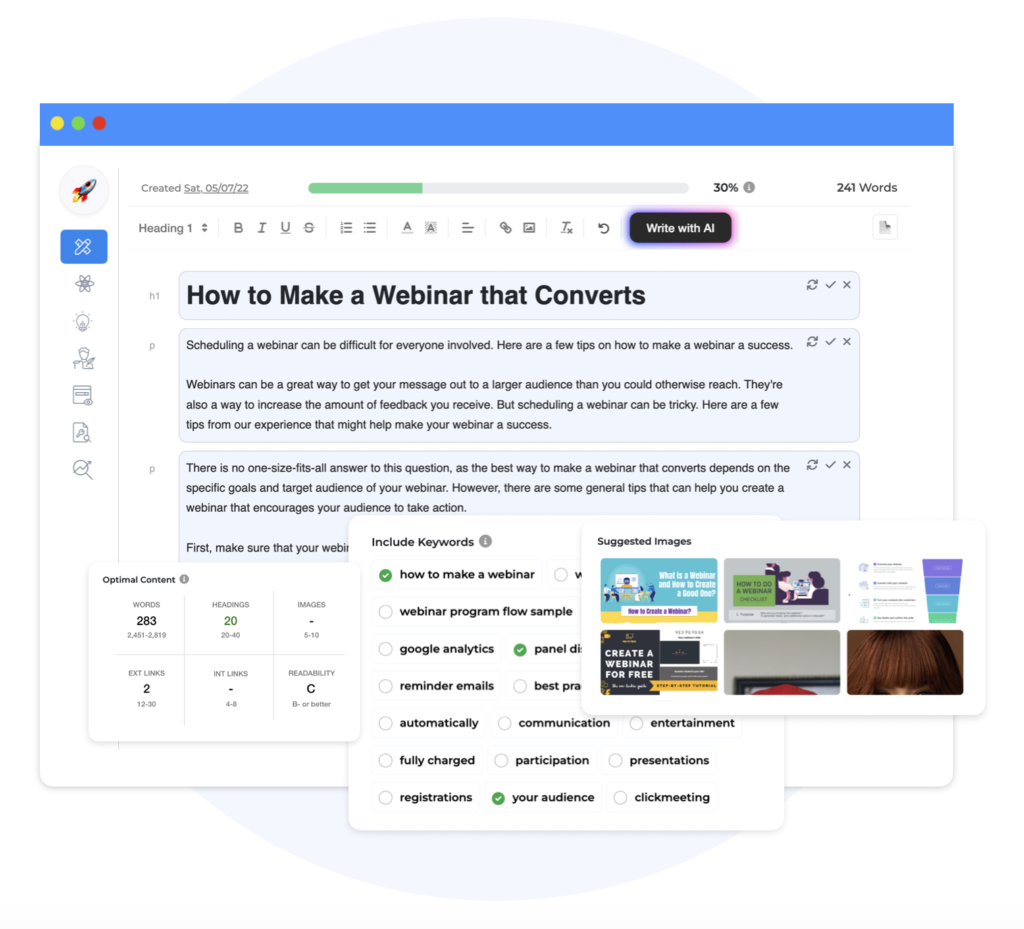
Also read: How Long Should My Blog Post Be? and How Often Should I Blog for SEO?
3. Make it readable
Long doesn’t necessarily mean lengthy paragraphs. Many people skim articles before diving in, so you should help out the readers who won’t sit through 2,000 words of dense content.
Some important ways to add formatting to your blog article:
- Make sure each section has clear headlines/key takeaways so that the blog post is easy to skim.
- Break up the paragraphs into short paragraphs. Each one should have no more than 4 sentences.
- Vary sentence length. It’s easier to read blog posts that have a mix of long and short sentences. It keeps users scrolling!
- Use bullets, numbered lists, and bolding for emphasis
- Add images, infographics, tables, and charts to illustrate more complex points (or just for fun)
- Make sure it looks good on mobile! Google predominantly uses mobile-first indexing — meaning if your mobile site looks terrible, even incredible content will not rank.
GrowthBar’s Content Audit tool enables you to optimize your content using hundreds of factors.
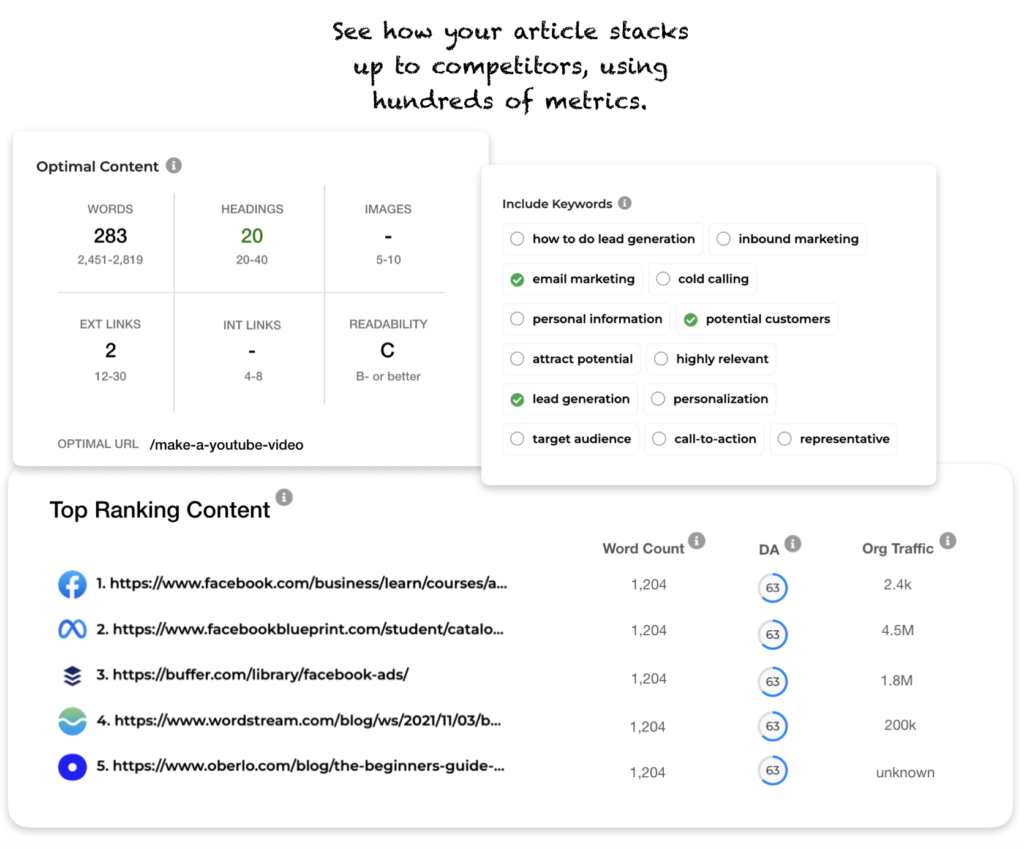
Check out GrowthBar free for 5 days and make your SEO efforts a lot easier! Watch me make a blog post with it in 5 minutes here.
4. Links are very important
Do you notice how many links to other articles this post contains? That’s because links keep people on your site and build trust in Google’s eyes.
Some important links to focus on to write a blog post that ranks are:
Link to credible sources: I’ve found time and time again that our best-performing articles have external links to very authoritative sources in the first couple of paragraphs of the article. If you’re writing medical content or trying to improve SEO for doctors, link to Mayo Clinic or university studies. This shows Google you care about quality first and foremost.
Internal Links: Internal linking is one of the most important things you can do to rank in the search engines.
More internal links equal higher placement in SERP (search engine results page). Each blog post should include at least 2-3 links to other pages on the blog or the main site.
Also read: How to Create a Content Cluster
Of course, fit as many as appropriate, but make sure your anchor texts is representative. That means you don’t want to link the phrase “top SEO marketing agencies” to an article that’s really about rank tracker tools.
Also, make sure you go back to older posts on your site, and link back to the new post just written. This helps visitors find the new post and will give your post a boost in the search engines.
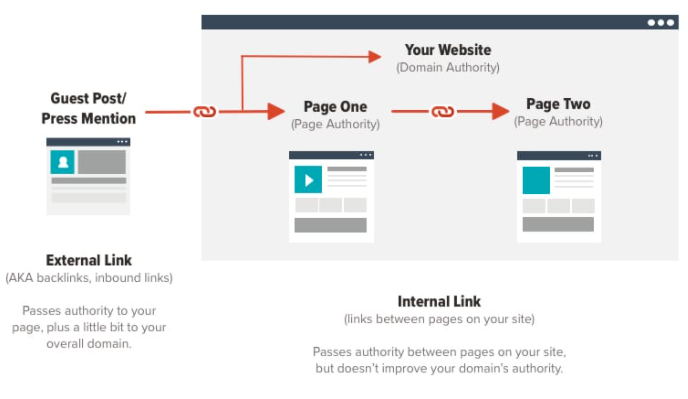
5. URLs matter
The URLs: Yes your URL structure matters for SEO. Stuff your keywords (within reason) into the URL of the article. For instance, in our article about the best marketing agencies and freelancer tools, it’s much better to make a product URL “/best-marketing-agency-freelancer-tools/” than “/marketing agency.” It’s simple, but it matters.
Additionally, avoid adding changeable elements in your URL. For example, this post is about the five steps you should take to get your web pages to rank higher on google. Reasonably, you might expect to see the phrase “5-steps” in the URL.
But…what if next month I was like: “Wow, I really should have let the GrowthBar readers know about this other amazing sixth step that can help get their articles to the first page?” Sure, I could change the URL, but then all my internal links will be broken, we’ll lose any backlinks to this article from other sites, etc…
It’s easier to lose these changeable elements, and save yourself a headache later. This also includes posts with years such as “Top 10 X of 2021,” or if your URL structure is set up to include the day it was published.
Google likes sites that are continuously updating their work, and dates literally age your blog posts.
6. Optimize the rest of your elements
While the quality of your content and keywords are incredibly valuable to your marketability and ranking, it is not recommended to treat post titles, meta titles, and meta descriptions as an afterthought.
These elements assist in further optimizing and maximizing your search rank, as well as how the reader interacts with your page. You should include your keywords in your post title, meta title, and meta description. The post title is pretty self-explanatory, and then we have:
- Meta title tag: The title of your post that will pop up on search engines
- Meta description: The description of your post that pops up on search engines
Other Best Practices for Ranking on Google
So there are a few more than six steps. Some other things to keep in mind if you want to write an article that ranks on Google:
- UI and UX: User experience and user interface do matter. Have you ever hit a website and thought, “wow this is so hard to follow.” Or “this site looks like it was made in 1992.” If you’ve thought that, Google probably agrees. Your site doesn’t have to be the most beautiful thing on the internet, but it does have to be friendly, easy to navigate, and functional. A good rule of thumb is that it should take no more than three clicks to get from one page on your site to any other page.
- Site speed: A lot of so-called experts say site speed is one of the most important Google ranking factors. This isn’t true. But it’s not completely false either. As long as your site loads reasonably fast and maintains a good record of uptime you should be fine. That means it may be worth upgrading to dedicated web hosting if your shared hosting is holding you back. Check out Google’s free Lighthouse Audit to gauge your site speed and learn how to fix it.
- Niche down: When you’re trying to rank on Google, it’s not just one post that’s going to do it. Google talking head, John Mueller has explicitly said, “it’s pretty hard for a site to be considered authoritative with less than 30 articles.” So it’s important to publish consistently and publish within a single niche. For better or worse, Google pigeonholes you into a niche. It’s going to be hard to rank for keywords related to software reviews and keywords related healthcare on the same site. Unless you’re a massive brand, you need to choose a lane and stay in it. In this way, Google will begin to realize you’re a topical authority in the space.
- Keep users on-site: Google’s Helpful Content update killed a lot of sites that just had a ton of blog posts. I know that’s tough to hear, but it’s important to understand that Google wants more than just great content these days. If possible, include other resources on your site that will keep users hanging around. Sure, blog posts can do a pretty good job of it, but other offerings may do an even better job: offer a course, include helpful white paper downloads, display testimonials, or feature a widget or tool that helps users have a deeper experience on your site. There are a lot of blogging-adjacent pages and offerings that can keep users on your site and coming back for more. Do some brainstorming and come up with some other stuff. This isn’t to say that blogging alone doesn’t work — it does. But getting creative about offering users additional value will pay dividends.
Conclusion
Following these steps will definitely help you write an article that will rank highly on Google. But I’d be remiss to mention that SEO doesn’t happen in a vacuum of one post.
SEO works together with lots of other elements of your site. It’s important you consider the technical elements of your site, link building and through other authority-building best practices.
- The 15+ Best AI Content Generators
- Should I Buy Backlinks?
- What Should I Do After a Google Algorithm Update?
- How Many Blog Posts Should I Write Per Week?
Check out GrowthBar free for 5 days to help make your SEO efforts a lot easier! Watch me make a blog post with it in 5 minutes here.



